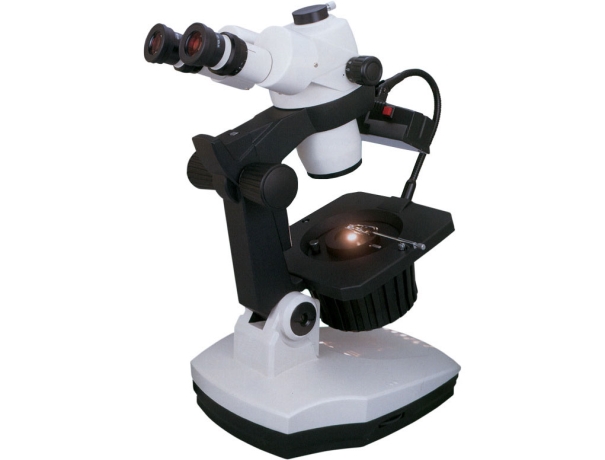A gemological microscope is a specialized microscope used in the field of gemology, the study of diamonds and gemstones. These microscopes are used to examine and identify various types of gems, including diamonds, rubies, sapphires, and emeralds. They can be used to assess a gemstone's color, clarity, and overall quality, as well as to detect any internal or external features that may affect its value.
Application of Gemological microscopes
Gemological microscopes are used in the field of gemology to examine and identify gems and diamonds. They are used to view the internal characteristics and external features of a gemstone, such as inclusions, crystal structure, and color. They can also be used to grade gems and diamonds based on their quality and determine if they are natural or synthetic. Additionally, gemological microscopes can be used to examine and assess the quality of cut and polish of a gemstone and detect any possible treatments or enhancements.
What types of diamonds are suitable for gemological microscopes?
Gemological microscopes can be used to examine and identify all types of diamonds, including natural, synthetic, and treated diamonds. They are particularly useful for examining natural diamonds, as they can reveal a variety of internal characteristics, such as inclusions, that are unique to each diamond and can be used to identify them. Additionally, gemological microscopes can be used to examine synthetic diamonds, which are created in a laboratory, and determine if they are lab-grown or man-made. They can also be used to detect any treatments or enhancements that a diamond may have undergone, such as laser drilling or fracture filling.

and gems ?
Yes, gemological microscopes can also be used to examine and identify various types of gems, including precious and semi-precious stones. They can be used to view the internal characteristics and external features of a gemstone, such as crystal structure, color, and inclusions. They are particularly useful for identifying natural gems, as they can reveal unique internal characteristics that are specific to each gemstone. Additionally, it can be used to examine synthetic gems, which are created in a laboratory, and determine if they are lab-grown or man-made. They can also be used to detect any treatments or enhancements that a gemstone may have undergone, such as dying or heating.
In summary, gemological microscope is a valuable tool for gemologist, jeweler, and other professional in the field of gemology and diamond industry, to examine and identify natural, synthetic, treated gems and diamonds, and also to grade their quality.
Gemological microscopes have a number of features that make them well-suited for gem examination. They typically have a high magnification range, allowing the user to examine a gemstone in great detail. They also feature a built-in light source, which helps to illuminate the gemstone and make it easier to see. Some also have a camera that can be used to take pictures or videos of the gemstone being examined, which can be useful for record-keeping and documentation purposes.
One of the most important feature that these microscope should have is the ability to observe the specimen under polarised light, which helps in identifying the mineral species, internal structure and any inclusions. Gemologist use the polariscope, which is an attachment to the microscope, to check the pleochroism and double refraction of the specimen.
When it comes to brands, Gemological Microscopes are made by a number of manufacturers, including GIA, Zeiss, Leica,Motic ,and Olympus. Some of the popular gemological microscope brand is Motic. Motic is known for its high-quality gemological equipment and have a wide range of microscope and it is considered as the industry standard.
Motic Gemological Microscopes
Some of the key features of Motic gemological microscopes include:
High Magnification: They typically have a high magnification range, up to 50x. This allows for detailed examination of gemstones and other specimens.
Bright and even Illumination: They Have a built-in light source that provides bright and even illumination. Have halogen and flourescent lights, which can be adjusted for the best observation of specimen.
Adjustable stage: The stage or the diamond holder is adjustable and can be tilted and rotated in various angles to provide a better view of the specimen.
Durable construction: they are built with high-quality materials and are designed to withstand heavy usage.
Camera Integration: Some have an inbuilt camera, this is useful to take pictures or videos of the diamond, which can be used for documentation and record keeping purposes.
Technical support: It comes with a comprehensive technical support, which includes user manual, training, and regular maintenance.
These are just some of the features of, but overall they are considered as industry standard and widely used in the field of gemology. GIA microscope offer advanced features and durability which makes it an ideal choice for the professional gemologist and researchers.
In conclusion, a gemological microscope is a specialized tool that is essential for anyone working in the field of gemology. With their high magnification and built-in light source, these microscopes are able to provide detailed, accurate information about a gemstone, which can be used to assess its quality and value. Additionally, being able to observe the diamond under polarised light is a very important feature which would help to identify the mineral species, internal structure and any inclusions.